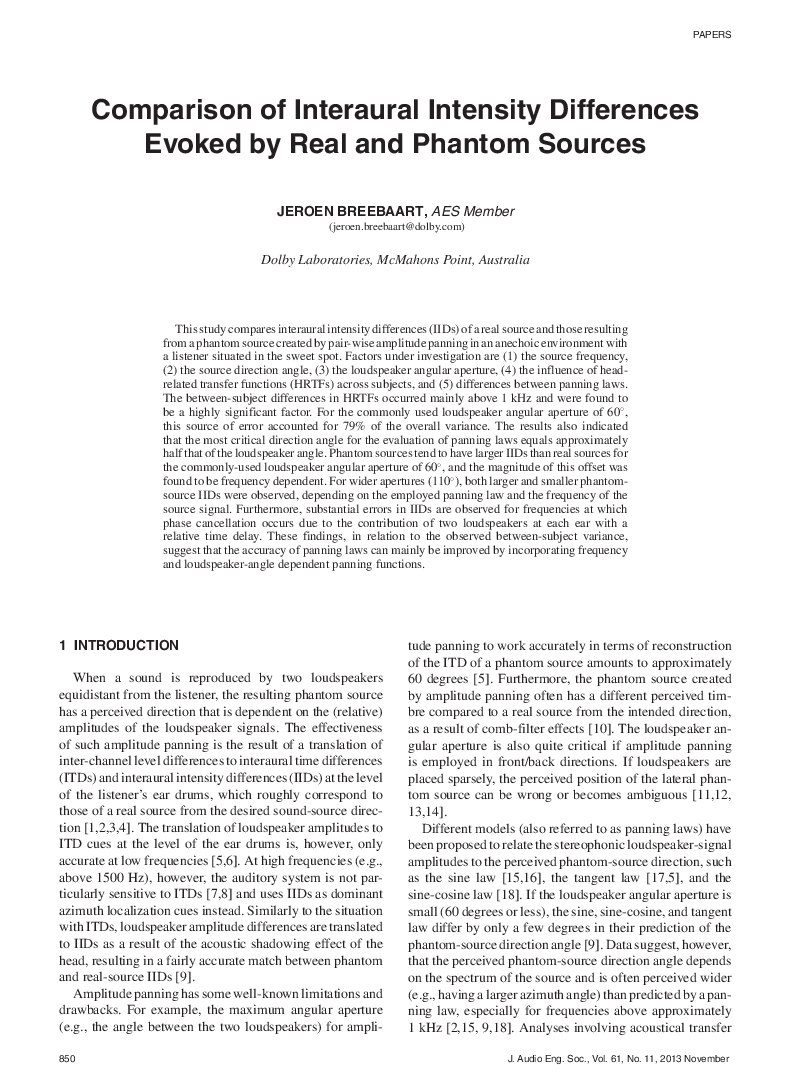Home / Publications / E-library page
You are currently logged in as an
Institutional Subscriber.
If you would like to logout,
please click on the button below.
Home / Publications / E-library page
Only AES members and Institutional Journal Subscribers can download
This study compares interaural intensity differences (IIDs) of a real source and those resulting from a phantom source created by pair-wise amplitude panning in an anechoic environment with a listener situated in the sweet spot. The results indicate that the translation of panning gain ratios to IIDs depends on the source frequency, the individual’s HRTFs, the loudspeaker angle, and the source direction angle. For small loudspeaker angular apertures, the IIDs of a phantom source are typically larger in absolute sense than those of a real source from the direction predicted by the panning laws under test, especially above 1 kHz. The most conservative panning law (sine-cosine) generally results in the best correspondence between phantom and real source IIDs. For wider loudspeaker angular apertures the IID of the phantom source is either smaller or larger than the IID of the real source, depending on the sound source frequency and the panning law under test.
Author (s): Breebaart, Jeroen
Affiliation:
Dolby Laboratories, McMahons Point, Australia
(See document for exact affiliation information.)
Publication Date:
2013-11-06
Import into BibTeX
Permalink: https://aes2.org/publications/elibrary-page/?id=17067
(308KB)
Click to purchase paper as a non-member or login as an AES member. If your company or school subscribes to the E-Library then switch to the institutional version. If you are not an AES member Join the AES. If you need to check your member status, login to the Member Portal.

Breebaart, Jeroen; 2013; Comparison of Interaural Intensity Differences Evoked by Real and Phantom Sources [PDF]; Dolby Laboratories, McMahons Point, Australia; Paper ; Available from: https://aes2.org/publications/elibrary-page/?id=17067
Breebaart, Jeroen; Comparison of Interaural Intensity Differences Evoked by Real and Phantom Sources [PDF]; Dolby Laboratories, McMahons Point, Australia; Paper ; 2013 Available: https://aes2.org/publications/elibrary-page/?id=17067